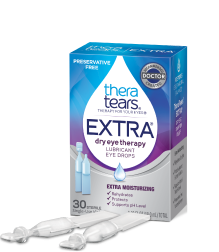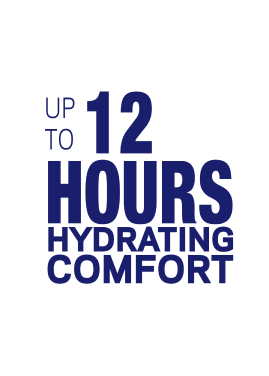Science-Backed Hydration™

Are You Using the Right Type of Eye Drop?
You’re bound to see dozens of eye drops as you walk through the store. So, how do you know which eye drop will best treat your symptoms?
Well, not all eye drops are created equal. It’s important to learn about the different types of eye drops, so you don’t accidentally purchase the wrong one for your symptoms. We’ll explain how you can find the right eye drop for your particular condition, so you can access relief that much sooner. *
Which eye drops do you need?
Before you grab a product off the shelf, ask yourself why you need an eye drop in the first place. Are your eyes red and irritated? Is allergy season at an all-time high?
Knowing which eye drops you need ahead of time will help you make a better and faster choice while you’re shopping. Below is a guide to different types of eye drops available for different types of eye conditions, so you can start finding soothing relief.
Antihistamines for Allergies
These eye drops help treat the typical symptoms of an allergic reaction, such as swelling, irritation, wateriness, and redness. When your body has an allergic reaction, it releases a chemical reaction called histamines, like a running nose, itchy eyes, sneezing, etc. These eye drops have antihistamines to prevent those common allergy symptoms and offer some symptom relief. These eye drops can be purchased over the counter. However, if you are having a severe allergic reaction, you should contact your doctor.
Lubricant Eye Drops for Dryness
The best eye drops for dry eyes for many people are lubricant eye drops, also known as artificial tears. They are designed to mimic real tears and help combat dryness by acting as a moisturizing barrier. These eye drops stay in your eyes for longer and increase lubrication of the eyes, so your eyes feel hydrated and nourished. Lubricant eye drops are available over the counter, and TheraTears® has several eyedrop formulas available.
Redness Relieving Eye Drops
Redness can occur in the eyes due to lack of sleep, stress, or general fatigue. As a result, the blood vessels in the eyes become larger. If you’re looking to improve the look of your eyes, using an astringent eye drop can decongest the blood vessels in your eye and reduce redness. Many eye drops produce a reaction called vasoconstriction, which shrinks the blood vessels in the eye and temporarily brightens the eye.
Rewetting Drops for Contact Lens Wearers
The recommended eye drops for contacts are rewetting drops specially formulated for contact lens wearers. Rewetting drops relieve the dryness and discomfort generated from daily contact use. These eye drops are labeled “for contact use” and can usually be found near your contact lens products in the pharmacy aisle.
Other Types of Eye Drops
There are also prescription eye drops for treating chronic eye conditions or bacterial infections within the eyes. However, you won’t find these sitting on the shelf in the pharmacy aisle. Instead, you will need to visit a doctor to get a diagnosis for your eye condition, and they will write you a prescription.
You also may notice some herbal or homeopathic eye drops on the pharmacy shelves. They have a mixture of ingredients like electrolytes and guar gum. These eye drops have risen in popularity in the last few years, but there’s no objective evidence that they work.
Final notes about eye drops
There are a lot of eye drops available over the counter that address a wide range of eye care needs. If you are unsure which eye drops are best for you or are not getting the relief that you need, speak with your eye care doctor or pharmacist to help you make the right decision.
*This website is provided for educational and informational purposes only and does not constitute providing medical advice or professional services. The information provided should not be used for diagnosing or treating a health problem or disease, and you should always seek the guidance of your doctor or other qualified health professional with any questions you may have regarding your health or a medical condition.
EXTRAordinary relief, now available in preservative free vials
TheraTears EXTRA dry eye therapy

EXTRAordinary relief, now available in preservative free vials

